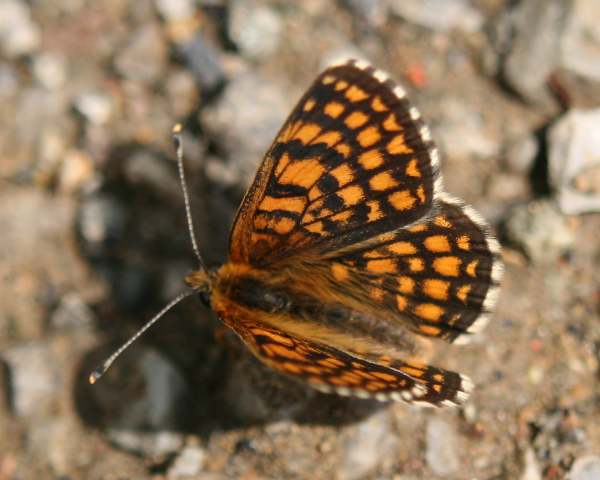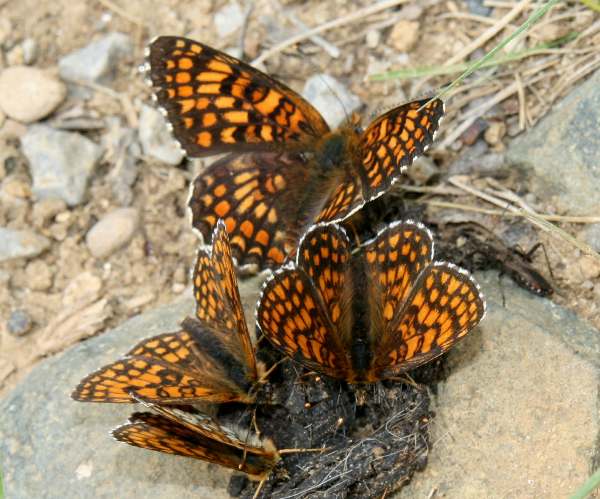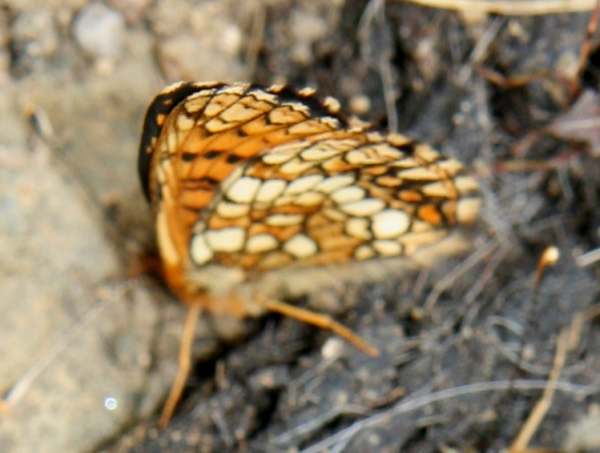Nickerl's Fritillary - Melitaea aurelia
Phylum: Arthropoda - Class: Insecta - Order: Lepidoptera - Family: Nymphalidae

Formerly known by the scientific name Mellicta aurelia, Nickerl's Fritillary is very similar to other members of the genus Melitaea, but is is characterised by the continuous and regular black markings on the upperwings, particulary the hindwings. Seen from beneath, there is another distinguishing feature: the narrow marginal band on the underside of the hindwing is filled in with yellow.

Distribution
Not found in Britain and Ireland, Nickerl's Fritillary occurs in central Europe including parts of France, Germany, Austria, northern Italy but it is most common in the countries of eastern Europe, including Bulgaria.
Habitat
This species is usually found in wildflower meadows, heaths, herb-rich scrubland, moorland and peat bogs.
Lifecycle
The primary larval foodplant of Nickerl's Fritillary is Ribwort Plantain Plantago lanceolata. The single brood of adults can be seen in flight from early June through to late July. These butterflies take nectar from various members of the daisy family Asteraceae (Compositae) as well as some other wildflowers.

The specimens shown on this page were photographed in Bulgaria.
Studying butterflies and moths...
Excited at the prospect of flyfishing? So are we, and we're pretty sure you would find the Winding River Mystery trilogy of action-packed thrillers gripping reading too. Dead Drift, Dead Cert, and Dead End are Pat O'Reilly's latest river-and-flyfishing based novels, and now they are available in ebook format. Full details on our website here...
Buy each book for just £4.96 on Amazon...
Please Help Us: If you have found this information interesting and useful, please consider helping to keep First Nature online by making a small donation towards the web hosting and internet costs.
Any donations over and above the essential running costs will help support the conservation work of Plantlife, the Rivers Trust and charitable botanic gardens - as do author royalties and publisher proceeds from books by Pat and Sue.
